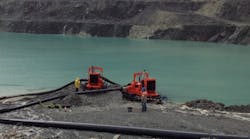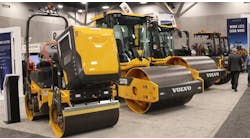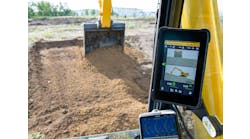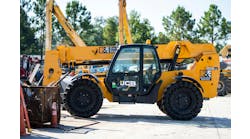Top News Stories of 2016: Taylor Rental, Tsurumi Work on Hurricane Matthew Cleanup
Many rental companies in the area around St. Augustine, Fla., are still working in the aftermath of Hurricane Matthew to mitigate flood damage caused by the storm. Taylor Rental, based in the city, is using gas-powered centrifugal pumps to remove waste-laden slurry from residential properties and to shore up damaged marine infrastructure.
While many cities in Florida were hit hard by the hurricane, St. Augustine were badly hit. In some parts of St. Augustine, floodwaters rose up to 2.5 feet above ground level. More than 1,000 of the city’s historic, colonial structures were damaged in the downtown area, and less than 40 miles to the south, near Flagler Beach, concrete segments of Florida State Road A1A were completely washed away.
Although Hurricane Matthew moved away from the coastline on Oct. 9, and some communities have completed the remediation process, the need for pumping solutions in St. Augustine is expected to continue well into 2017.
“The cleanup effort is still going strong,” said Stacy Baucum, manager of Taylor Rental. “I don’t think many people realize that unless they live right where the flooding occurred. It’s especially difficult in St. Augustine, where high tides can still exacerbate problems. The combination of floodwaters and rising tides can sometimes make a bad situation worse.”
For Taylor Rental, the first step was the removal of floodwater from residential properties.
“In the immediate aftermath of the storm, our primary focus was moving water out of pools and ditches,” said Baucum. “It was a nasty situation where overflowing sewage combined with stormwater – the resulting slurry mostly wound up in homeowners’ backyards, filling up their in-ground pools and creating a haven for mosquitos. We needed to get the water out as quickly as possible, and we found success on those jobsites with Tsurumi’s gas engine centrifugal pumps and electrical submersible dewatering pumps. For example, the TE2-50HA gas engine centrifugal pumps are light enough for a two-man crew to easily maneuver around the jobsite and they move up to 8220 gph.”
The initial neighborhood dewater is mostly finished, but the second phase of the cleanup efforts involve shoring up damaged marine infrastructure.
“We’ll be fixing seawalls and docks in this area for a long time to come,” Baucum said. “Tsurumi’s TE2-50HA also work great for these applications, especially in the case of seawalls. By hooking a jet pipe to the discharge side of the pump, we can take water from the ocean and use the water pressure to dig a hole. Then, we put a pylon in the hole and jet it to the proper depth. It’s a task that requires constant movement of water. We’ve got a long way to go, so having reliable pumps on hand is a must.”







